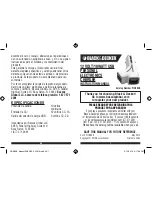
WARNING!
Do not use Summer tires in snow/ice conditions. You
could lose vehicle control, resulting in severe injury or
death. Driving too fast for conditions also creates the
possibility of loss of vehicle control.
Snow Tires
Some areas of the country require the use of snow tires
during the Winter. Snow tires can be identified by a
“mountain/snowflake” symbol on the tire sidewall.
If you need snow tires, select tires
equivalent in size and type to the origi-
nal equipment tires. Use snow tires only
in sets of four; failure to do so may
adversely affect the safety and handling
of your vehicle.
Snow tires generally have lower speed ratings than what
was originally equipped with your vehicle and should not
be operated at sustained speeds over 75 mph (120 km/h).
For speeds above 75 mph (120 km/h), refer to original
equipment or an authorized tire dealer for recommended
safe operating speeds, loading and cold tire inflation
pressures.
While studded tires improve performance on ice, skid and
traction capability on wet or dry surfaces may be poorer
than that of non-studded tires. Some states prohibit stud-
ded tires; therefore, local laws should be checked before
using these tire types.
Run Flat Tires — If Equipped
Run Flat tires allow you the capability to drive 50 miles
(80 km) at 50 mph (80 km/h) after a rapid loss of inflation
pressure. This rapid loss of inflation is referred to as the
Run Flat mode. A Run Flat mode occurs when the tire
inflation pressure is of/or below 14 psi (96 kPa). Once a
Run Flat tire reaches the Run Flat mode, it has limited
driving capabilities and needs to be replaced immediately.
A Run Flat tire is not repairable.
It is not recommended to drive a vehicle loaded at full
capacity, or to tow a trailer while a tire is in the Run Flat
mode.
See the tire pressure monitoring section for more informa-
tion.
5
STARTING AND OPERATING
385
Summary of Contents for Chassis Cab 2017
Page 4: ......
Page 10: ......
Page 288: ...8 4 8 4 NAV With Manual Temperature Controls 286 UNDERSTANDING YOUR INSTRUMENT PANEL ...
Page 289: ...8 4 8 4 NAV With Automatic Temperature Controls 4 UNDERSTANDING YOUR INSTRUMENT PANEL 287 ...
Page 298: ...Operating Tips Chart 296 UNDERSTANDING YOUR INSTRUMENT PANEL ...
Page 305: ...Uconnect 5 0 Radio Uconnect 8 4 8 4 NAV Radio 4 UNDERSTANDING YOUR INSTRUMENT PANEL 303 ...
Page 307: ...Uconnect 5 0 Media Uconnect 8 4 8 4 NAV Media 4 UNDERSTANDING YOUR INSTRUMENT PANEL 305 ...
Page 452: ......
Page 513: ...MAINTENANCE SCHEDULES CONTENTS 䡵 MAINTENANCE SCHEDULE 512 Maintenance Chart 513 8 ...
Page 525: ...INDEX 10 ...
















































